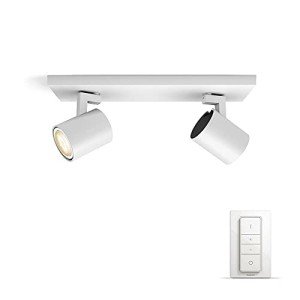Decorative Lighting in the UK: A Comprehensive Guide
In current years, decorative lighting has actually taken centre stage in interior design across the UK. Homeowners and designers alike are significantly identifying the value of lighting not just for performance, but also for aesthetics. This short article digs into the numerous kinds of decorative lighting readily available, the latest patterns in the UK market, and practical tips for selecting and setting up the right lighting to boost different areas in homes.
Comprehending Decorative Lighting
Decorative lighting includes a broad variety of lighting fixtures that serve to improve the beauty of an area while also offering illumination. This type of lighting includes a touch of style, character, and warmth to environments, producing state of minds and highlighting architectural features. The key distinction in between decorative lighting and other forms of lighting, such as task or ambient lighting, is that decorative lighting primarily intends to develop visual appeal.
Types of Decorative Lighting
There are different forms of decorative lighting that house owners can choose from, consisting of:
- Chandeliers: Often the focal point of dining areas or grand entrances, chandeliers are intricate lighting fixtures with multiple bulbs and artistic designs.
- Pendant Lights: Suspended from the ceiling, pendant lights are offered in numerous designs, making them appropriate for cooking areas, dining locations, or living rooms.
- Wall Sconces: Mounted on walls, these fixtures can provide ambient lighting or spotlight particular areas, such as art work or architectural details.
- Table Lamps: Used on bedside tables, desks, or side tables, they can vary from minimalist styles to elaborate creative pieces.
- Floor Lamps: These versatile fixtures can fill empty corners while offering both ambient and job lighting.
- Fairy Lights: String lights or fairy lights include a whimsical touch to both indoor and outdoor areas, best for developing an inviting environment.
- Neon Signs: An emerging pattern, neon indications include a modern, urban flair and are popular for home bars, games rooms, and individual spaces.
Present Trends in Decorative Lighting
The UK lighting market has actually seen a number of evolving trends that reflect consumer choices and developments in technology. A few of the popular trends include:
- Sustainable Lighting: Eco-friendly choices, such as LED lighting, are increasingly favoured for their energy performance and lower carbon footprint.
- Smart Lighting: Integration of smart innovations enables property owners to control their lighting through smartphones or voice assistants, offering convenience and adaptability.
- Vintage and Industrial Designs: The rustic appeal of vintage and industrial styles stays in vogue, as they can easily mix with both modern and traditional interiors.
- Geometric Shapes: Light fixtures featuring vibrant geometric shapes contribute to a contemporary visual that interest modern house owners.
Selecting the Right Decorative Lighting
When selecting decorative lighting, it is very important to think about the following aspects:
- Purpose: Determine the main purpose of the lighting. Is it to develop an inviting atmosphere, emphasize art work, or supply practical lighting for activities?
- Style: Carry out research to make sure that the picked lighting complements the existing design and reflects personal design choices.
- Size: Consider the scale of the area. Extra-large fixtures can overwhelm little spaces, while petite alternatives may appear lost in bigger areas.
- Placement: Think seriously about where the fixtures will be set up, ensuring they are available and successfully illuminate the intended areas.
- Energy Efficiency: Opt for energy-efficient LEDs whenever possible to save money on energy costs and contribute to sustainability.
Setting Up Decorative Lighting
Once decorative lighting alternatives have actually been chosen, appropriate installation is essential to achieving the desired effect. Here are some standards to follow:
- Mounting Height: Ensure that chandeliers and pendant lights hang at an appropriate height. They need to provide ample light without blocking views or movement.
- Layered Lighting: Incorporate different layers, consisting of job, ambient, and decorative lighting, to develop balance and depth within an area.
- Dimmers: Installing dimmer switches can provide versatility in adjusting light intensity based upon activities and mood.
- Professional Assistance: For complex setups, it may be useful to work with a professional electrical expert to guarantee security and compliance with local regulations.
Decorative lighting offers a fantastic chance for property owners in the UK to express their design while improving the performance of their spaces. With a variety of choices readily available, mindful factor to consider of elements such as style, size, and positioning can result in sensational outcomes. As lightingandlamps continue to develop, people can remain on the cutting edge of decorative lighting style.
Frequently Asked Questions (FAQs)
Q: What is the distinction in between decorative lighting and ambient lighting?A: Decorative lighting is mainly concentrated on aesthetic appeal, while ambient lighting offers general lighting for a space. Q: How can I select the ideal size chandelier for my dining room?A: A common guideline is to add the measurements of the room(
in feet)and use that number as the diameter of the chandelier(in inches ). Q: Are LED lights suitable for decorative lighting?A: Yes, LED lights are commonly utilized
due to their energy performance, long life expectancy, and capability to come in numerous styles. Q: Is it required to consult a professional for installation?A: While some installations can be done DIY, it's suggested to
seek advice from an expert for complex setups to guarantee security and
compliance. Q: What products are popular for decorative lighting fixtures in the UK?A: Common materials include glass, metal, material, and wood, each contributing to different styles and looks. By comprehending the various types of decorative lighting readily available, remaining notified about the current trends, and following essential guidelines for selection and installation, anyone can transform their living areas into beautiful sanctuaries of light.

